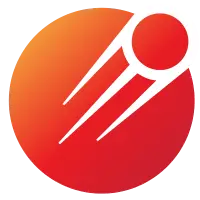Galileo IOV FM01-FM02
Launch Success
Liftoff Time (GMT)
10:30:26
Friday October 21, 2011
Mission Details
Read Article
Launch Notes
First flight of a Soyuz from France/French Guiana. First flight of Soyuz ST-B/Fregat-MT. Flight VS01.
Galileo IOV FM01-FM02
Galileo is a global navigation satellite system that went live in 2016, created by the European Union through the European Space Agency (ESA) and operated by the European GNSS Agency (GSA). The €10 billion project is named after the Italian astronomer Galileo Galilei. One of the aims of Galileo is to provide an independent high-precision positioning system so European nations do not have to rely on the US GPS, or the Russian GLONASS systems, which could be disabled or degraded by their operators at any time. The use of basic (lower-precision) Galileo services is free and open to everyone. The higher-precision capabilities are available for paying commercial users. Galileo is intended to provide horizontal and vertical position measurements within 1-metre precision, and better positioning services at higher latitudes than other positioning systems. Galileo is also to provide a new global search and rescue (SAR) function as part of the MEOSAR system. The first Galileo test satellite, the GIOVE-A, was launched on 28 December 2005, while the first satellite to be part of the operational system was launched on 21 October 2011. By July 2018, 26 of the planned 30 active satellites (including spares) were in orbit. Galileo started offering Early Operational Capability (EOC) on 15 December 2016, providing initial services with a weak signal and reached Full Operational Capability (FOC) in 2019. The full Galileo constellation will consist of 24 active satellites, which is expected by 2021. It is expected that the next generation of satellites will begin to become operational after 2025 to replace older equipment, which can then be used for backup capabilities. IOV FM01 was named Thijs, and FM02 Natalia.
Medium Earth Orbit
2 Payloads
1,580 kilograms
Rocket


Manufacturer
RKK EnergiyaPrice
$30.00 million
Rocket
Height: 46.94m
Payload to Orbit
LEO: 9,000 kg
GTO: 3,250 kg
Liftoff Thrust
4,317 Kilonewtons
Fairing
Diameter: 4.11m
Height: 11.43m
Stages
4
Strap-ons
4
Launch Site
Stats
Soyuz 2.1b
6th
Mission
3rd
Mission of 2011
RKK Energiya
193rd
Mission
6th
Mission of 2011
2011
63rd
Orbital launch attempt